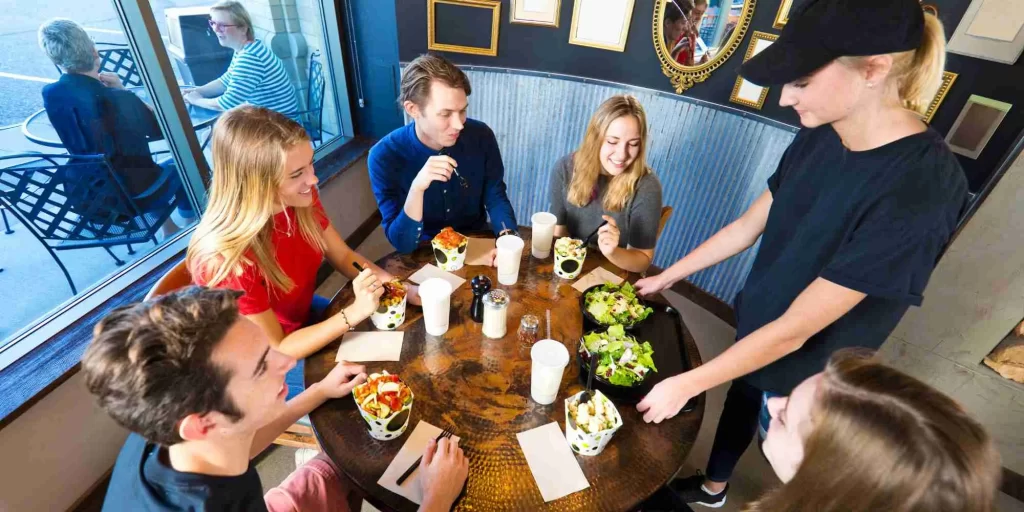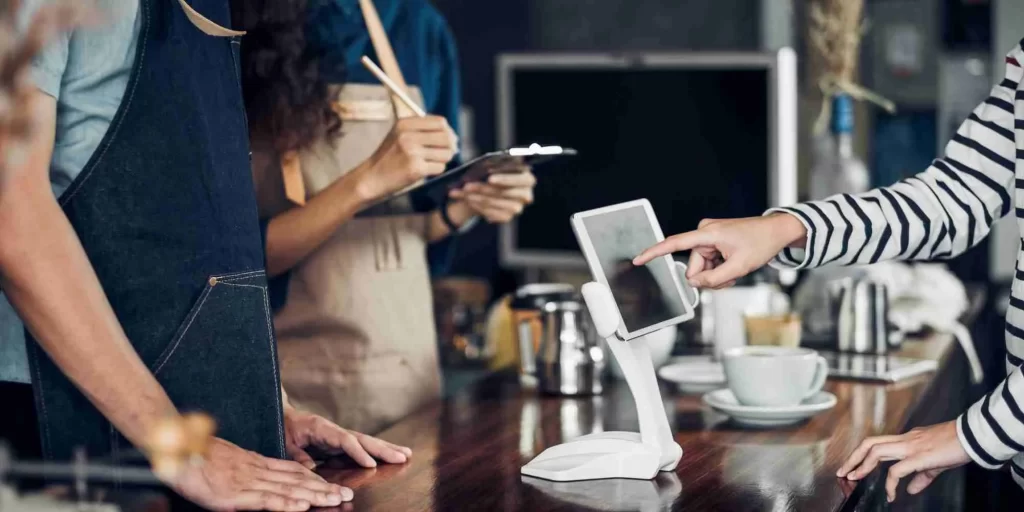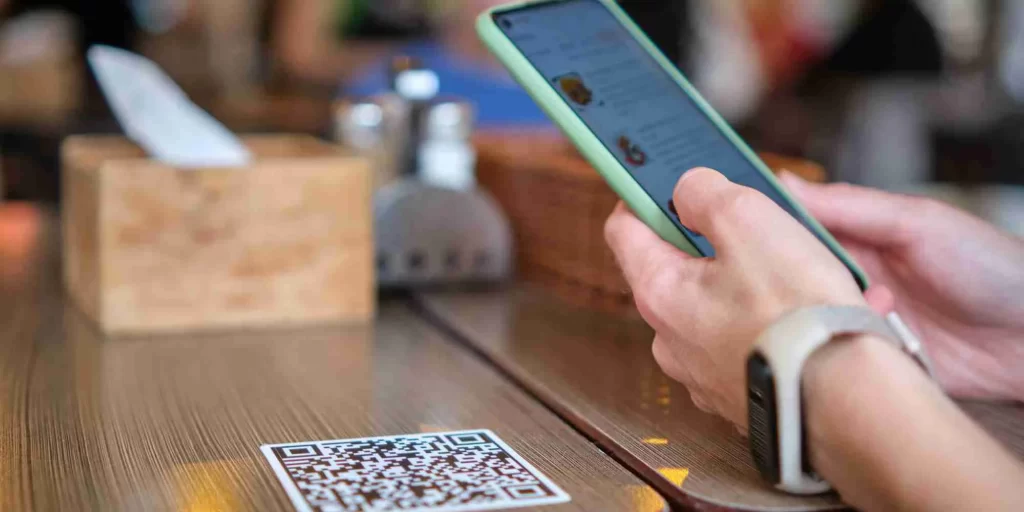In the dynamic landscape of the U.S. food industry, the emergence of self-service kiosks marks a significant shift, transforming how eateries engage with their patrons. For restaurant owners, this innovation isn’t just a trend; it’s a strategic tool reshaping the dining experience. Self-service kiosks, or as many know them, self-ordering kiosks, are becoming a staple in eateries, from bustling fast-food joints to serene, sit-down restaurants. Their rising popularity isn’t by chance; it’s a response to a changing consumer landscape that values efficiency, autonomy, and personalized service.
Embracing a self-ordering kiosk system means diving into an ocean of opportunities. Whether it’s a square self-ordering kiosk fitting neatly into a cozy corner or a comprehensive self-ordering kiosk software integrating with your entire service system, these innovations are redefining service delivery. But what’s the real essence behind their rising popularity? And more importantly, how can they contribute to your business’s success? Dive into this comprehensive guide to understand why self-service kiosks are not just enhancing the dining experience but are also becoming a pivotal part of successful restaurant management.
Following are the reasons why Self-Serve Kiosks Are Gaining Popularity in US Eateries
The restaurant industry is no stranger to evolution, but the rapid adoption of self-service kiosks across the U.S. is a revolution in its own right. The reason? A harmonious blend of enhanced customer experience and streamlined operational efficiency. Let’s unwrap the layers of benefits these kiosks bring to both patrons and restaurant owners.
1. Elevating Customer Autonomy and Convenience:
The modern diner values autonomy. Self-service kiosks place the power of choice directly into the customer’s hands, offering a level of control and convenience that traditional ordering methods struggle to match. Customers can leisurely explore the menu, customize their orders to suit their exact preferences, and make payments, all at their own pace and without the need for human interaction. This seamless, stress-free ordering process is particularly appealing in today’s fast-paced world, where time is often seen as a valuable currency.
Must Read: Are Self-Serve Kiosks the Key to Boosting Your Restaurant’s Revenue?
2. Reducing Wait Times and Improving Table Turnover:

In a bustling eatery, every second counts. Self-ordering kiosks significantly cut down wait times, not just by speeding up the ordering process but also by ensuring that the kitchen receives orders instantaneously and accurately. This efficiency is a win-win; customers enjoy quicker service, and restaurants benefit from a higher table turnover rate. The ability to serve more customers without compromising the quality of service can significantly boost a restaurant’s reputation and revenue.
3. Catering to Digital Natives:
The demographic landscape of consumers is shifting, with digital natives – those who have grown up in the age of the internet and digital technology – becoming a significant market segment. These tech-savvy customers expect digital solutions that align with their lifestyle. Self-service kiosks speak their language, offering a digital interface that is intuitive and engaging. By catering to the preferences of this influential group, eateries can position themselves as forward-thinking and customer-centric.
4. Empowering Businesses with Scalable Solutions:

One of the compelling advantages of self-ordering kiosks is their scalability. For small establishments, a self-ordering kiosk can efficiently handle orders without occupying much space. For larger restaurants or chains, a network of kiosks, integrated with self-ordering kiosk software, can provide a unified and scalable solution that grows with the business. This flexibility allows businesses of all sizes to leverage the benefits of self-service technology, tailor-made to their specific operational needs and customer base.
5. Enhancing Order Accuracy and Customer Satisfaction:
Miscommunication can be a significant pain point in the traditional ordering process. Self-service kiosks eliminate this issue by providing a clear, visual representation of the menu, complete with options for customization. When customers have the ability to carefully review and confirm their orders, the likelihood of errors diminishes dramatically. This accuracy not only enhances the customer’s experience but also reduces food waste and the associated costs, contributing to a more sustainable and profitable operation.
6. Facilitating Contactless Interactions:

Recent global events have accelerated the demand for contactless service options. Self-service kiosks meet this demand head-on by offering a contactless ordering solution that minimizes physical interaction. This feature is not just a response to current health and safety concerns but also a testament to the kiosks’ ability to adapt to evolving consumer preferences and market conditions.
7. Boosting Brand Image and Competitive Edge:
Incorporating self-ordering kiosks can significantly enhance a restaurant’s brand image. It signals to customers that the business is committed to leveraging cutting-edge technology to improve their dining experience. Moreover, in a competitive market, offering a high-tech, efficient, and customer-centric ordering solution can be a significant differentiator, setting an eatery apart from its competitors.
Must Read: How Self-ordering Kiosks are Decreasing Wait Times and Increasing Customer Satisfaction
As we delve into the myriad reasons behind the growing popularity of self-service kiosks in U.S. eateries, it’s clear that this trend is more than just a technological upgrade. It’s a strategic response to the evolving landscape of consumer behavior and market demands. Self-ordering kiosks represent a harmonious blend of efficiency, personalization, and innovation, propelling the restaurant industry into a future where technology and human experience converge to create unparalleled service quality.
Conclusion
For restaurant owners, the message is clear: the integration of self-service kiosks isn’t just about keeping up with the competition; it’s about setting new standards in customer service and operational excellence. It’s about embracing a future where technology enhances every interaction, making each dining experience not just a meal, but a memory cherished for its seamless, personalized, and efficient service. As the industry continues to evolve, self-service kiosks stand out as beacons of innovation, guiding the way toward a more efficient, customer-centric, and data-driven future.












Leave a Reply